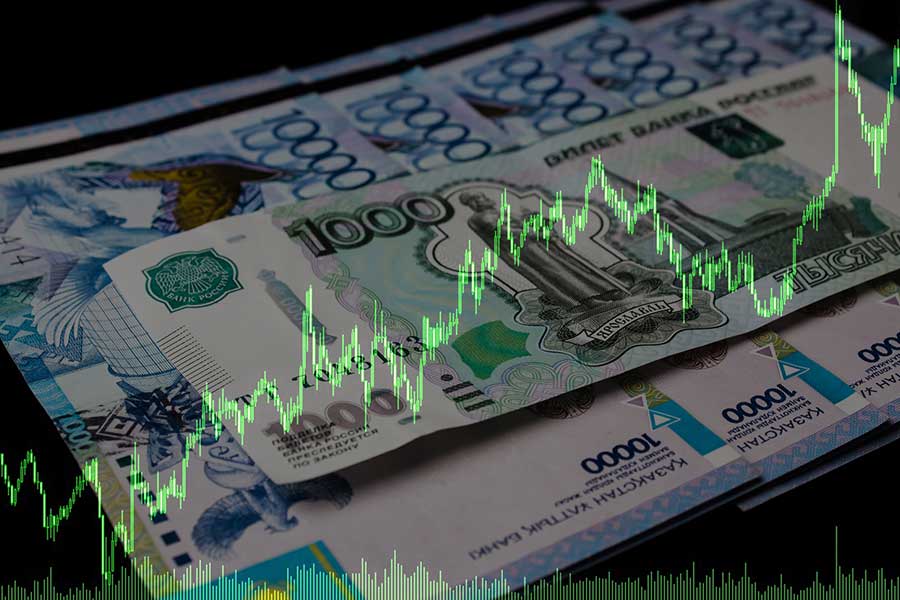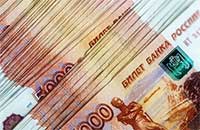Eurasian Central Banks: A Fragmentation of the Global Financial System is Already Happening

Discussions taking place concerning replacement systems and digital currency usage in trade with the RMB Yuan at the core
The Eurasian Economic Forum was held last week in Moscow, with discussions concerning the process of de-banking (disconnection from global payment systems) within the Eurasian region. Ksenia Yudaeva, the First Deputy Chairman of the Russian Central Bank said that this process has intensified and will introduce the fragmentation of the global financial system. Discussions took place as concerns a new financial settlement direction.
However, dealing with this requires planning, as any increase in the share of Russian trade operations in Eurasian national currencies is limited by the ratio of imports and exports with a particular country, as well as by the effect of capital restrictions.
An alternative way to make payment transactions, however, could be the use of digital currencies, participants in the profile session of the Eurasian Economic Forum said yesterday. In the EAEU, such currencies are being developed by the central banks of Russia and Kazakhstan: it is assumed that their launch will reduce the costs of cross-border payments and increase the efficiency of trade, although it will require solving a number of issues from exchange rate problems to the development of special foreign trade digital currency instruments.
An alternative to traditional channels using correspondent accounts of commercial banks (interaction with Russian banks and payment systems is limited by the sanctions applicable to them, and the risks of secondary sanctions for counterparty banks), the participants of the session called for the rapid development of digital currencies in the EAEU and the implementation of these to be formalised by the Central Bank regulators of Russia and Kazakhstan.
A launch and use of digital currencies in cross-border settlements will increase the speed of transfers and reduce transaction costs while avoiding the global SWIFT banking network, now considered sanctions toxic.
Russia’s Position

On the Russian side, a bill on the use of the Digital Rouble will be adopted in a first reading in June, according to Anatoly Aksakov, head of the State Duma committee on the financial market.
The Central Bank Deputy Chair, Ksenia Yudaeva, stated that the specifics of such operations are already being considered by international financial organisations, with 90% of the world’s central banks now experimenting with the creation of digital currencies.
She said it is technologically possible to use them in international settlements, while at the same time, for the needs of cross-border settlements, the introduction of Sovereign Digital Currencies is also being considered, to which foreigners can have access. She added that there are still issues in solving exchange rate mechanisms during such operations. An intelligent real-time system would need to be introduced.
Kazakhstan’s Position

Berik Sholpankulov, Deputy Chairman of the National Bank of Kazakhstan, said that in Kazakhstan, the use of digital currencies in cross-border payments is planned to be tested this year. “Digital currencies will create a fundamentally new mechanism for making settlements between countries,” said. According to him, now the national regulator is preparing a pilot to launch the Digital Tenge platform for payments on social benefits and public procurement.
In the meantime, bilateral trade in national currencies is limited primarily by the balance of imports and exports the use of national currencies is possible only in the part where trade is balanced therefore, market participants currently prefer to work in the “Universal” Dollar and Euro.
Oleg Solntsev, head of the monetary policy analysis department of the Center for Macroeconomic Analysis and Short-Term Forecasting (CMASF), however takes a somewhat different view, saying that settlements in national currencies can only be a temporary solution in the long term, as an expansion of the clearing zone will be required.
For Russian companies, the only friendly currency with large turnovers in both export and import transactions is now the RMB Yuan, but due to the continued capital restrictions in China, transactions between the onshore (mainland) and offshore (Hong Kong) markets are still difficult.
This distinction also affects the Russian market for currency swaps their volume is limited to offshore RMB Yuan, which is already in bank accounts in Russia: yet mainland Chinese banks do not withdraw their funds to this market.
In international foreign trade payments and reserves, the share of the RMB Yuan is still only 2.3%, although as Latin America and the Middle East are declaring an increase in the use of the currency this may lead to the strengthening of the RMB Yuan as the currency of the developing countries of the Global South and East. In China’s external turnover, including Hong Kong, the share of the RMB Yuan in regional trade has already exceeded the US dollar share (48% versus 47%), Yudaeva noted.
The EAEU Minister for Economy and financial policy, Bakytzhan Sagintaev, said that operations in other currencies of developing countries are also limited by issues related to having a balanced trade turnover, which is difficult with Russia as it is a major energy exporter and balance of payments become unwieldy. There are also strict national currency control, which encourages exporters to earn revenue in reserve currencies (this for example hinders the use of the Indian rupee in payments for Russian exports to India).
In the EAEU, however, the share of national currencies in settlements between countries last year increased to 79% (from 74-75%) and although there are no administrative barriers for such operations, it is necessary to reduce risks and costs when making settlements. So far, the obstacles are primarily the high volatility of exchange rates and low market liquidity, so exchange rates for currency pairs are often set through cross rates against the US dollar. However, there are prospects for direct trade.
The demand for transactions in the Kazakh Tenge and Russian Rouble on the Kazakhstan and Moscow stock exchanges is growing, he added.
Chris Devonshire-Ellis of Dezan Shira & Associates comments: “Clearly, the Russian Rouble and Kazakh Tenge are the dominant currencies in Central Asia, however the Rouble is to some extent a victim of its own economic clout. With Russia the world’s largest energy supplier, other countries, including major economies such as India, cannot maintain a balanced bilateral trade volume with Russia.
This creates trade problems as Russia is overflowing with Indian Rupees, a currency it cannot adequately use enough of to divest its holdings. Meanwhile, China maintains strict currency controls as it is well aware that if it does not, the US will use its dollar reserves to attack the RMB value and try to drive it down, creating serious devaluation issues in China while making Chinese exports cheaper for the US. A solution therefore needs to be found.
What may happen is the development of an intra-bank basket of RMB Yuan, Russian Roubles, and the five Central Asian currencies, including the Kazakh Tenge, as well as the Indian Rupee, that may be used in Eurasian trade. Additional financial support for such a scheme may also be found in the Middle East. It is an interesting dilemma; however, a solution will arise – as will the introduction of an alternative payments system. How we pay bills and transfer money in Eurasia in 2030 will be very different to how we currently do this in 2023.”
Source: Tatyana Edovina for Kommersant
Related Reading





